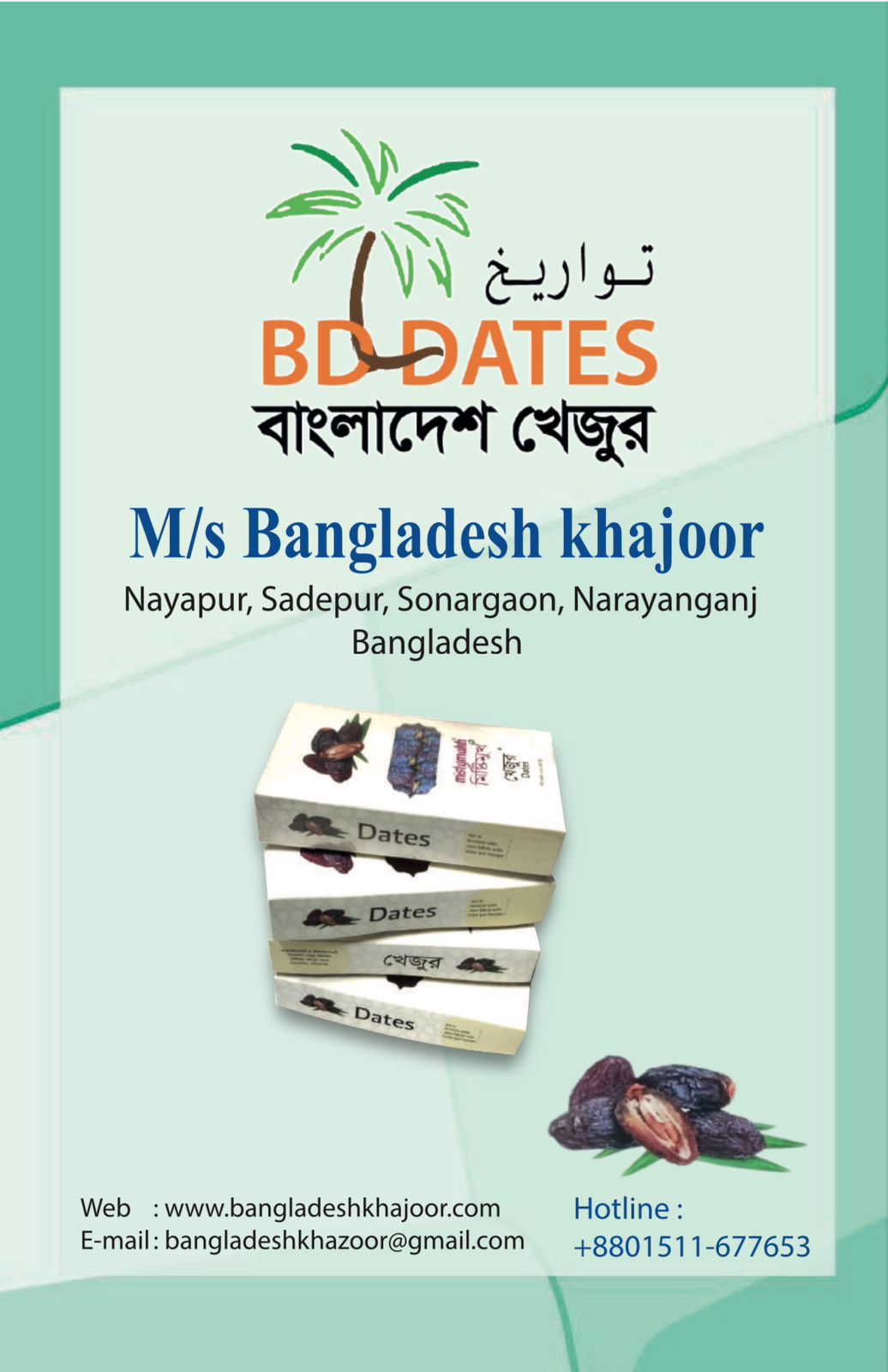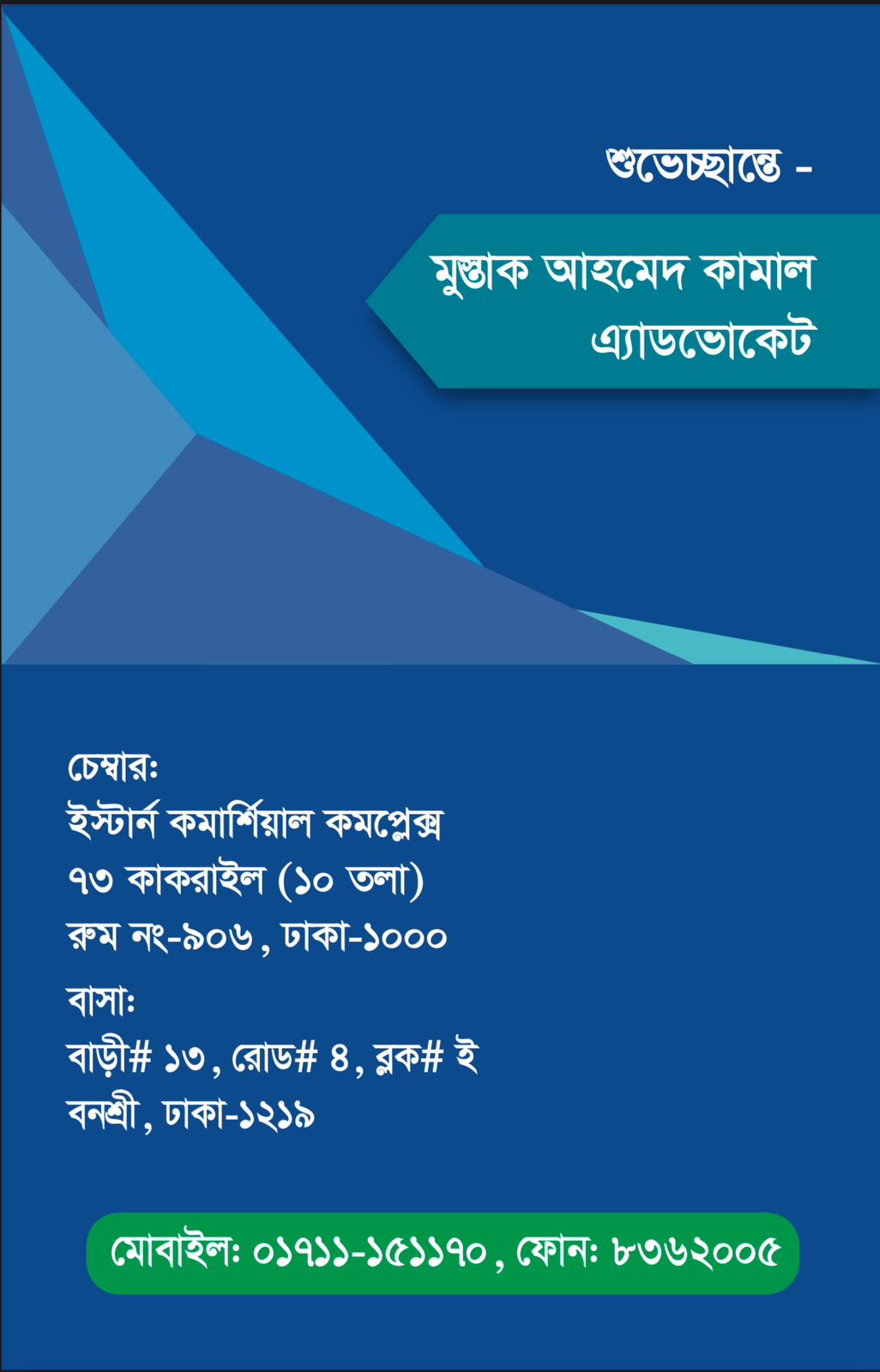River and River Basin Diversity of Deltic Bangladesh
River and River Basin Diversity of Deltic Bangladesh
– A Review on the Country’s Rivers and River Basins
Niamul Naser, Ph.D
Professor of Zoology
Faculty of Biological Sciences
University of Dhaka, Dhaka
Email: mnnaser@du.ac.Bangladesh
Introduction
Rivers are the key point of natural resources, integrated with the culture and civilization of related people. Early civilizations like in ancient Egypt (River Nile), Mesopotamia (River Tigris–Euphrates), ancient China (River Yellow and Yangtze) and Indus valley (River Indus) still bears the sign of social system – a history of mankind. In Indian sub-continent, the Indus valley civilizations namely Harappa and Mohenjo-Daro are noted for their ancient cultural ramifications and urban designs. These cultures were ruined due to the change in courses of mighty river Indus. It has been stated by some historians that, communities of these civilizations migrated from the Hindu Kush mountain valley to the other side of Himalayas, crossing the Thor desert, to settle in the source valley of river Ganges. In Bangladesh all major cities and cultural hubs are situated by the major rivers. Cultural city like ancient Rajshahi, Khulna, Barishal , and Dhaka are situated beside the Padma, Rupsha, Kitonkhola and Buriganga rivers respectively. There were regular steamer services from most of these cities to Kolkata in British-Indian regime. Thus the higher educated society and intellectuals were the domiciles of these cities. It has been noted that the renowned Noble laureate Poet Rabindranath Tagore wrote the best songs and poems in his life, while enjoying the natural beauty in moon-lit nights in rivers on his Bazra (large boat), whenever he came to see his Jaminder (landlord) assets in Jashore (the then Jashore of the Bengal).
Bangladesh, a riverine country is famous for its rivers and their geographical positions. According to the Bangladesh Water Development Board (BWDB 2011) 57 are trans-boundary in nature of 407 rivers. Most of the rivers flow from north to south and finally discharging the water into the Bay of Bengal. Three of Asia’s most mighty rivers, the Ganges-Padma, the Brahmaputra-Jamuna and the Meghna flow through Bangladesh. The country’s major rivers have originated mainly from outside of the country. These rivers carry 1.2 trillion cubic meter of water along with more than 1 billion tons of sediment every year from the catchment area outside the country (BWDB 2011). This sediment is carried out by numerous tributaries and distributaries throughout the country, making them more dynamic especially in the rainy season. As a result, due to their drainage capacity the rivers frequently change their courses, creating sedimentation loaded sand bars (chars), some of which even rise up during the dry seasons.
For many reasons water is one of the main resources of Bengal delta. The land, crops, fisheries, economic growth, and development of the country is highly influenced by the rivers. River of Bangladesh carries the major fresh water resources providing support to diverse aspects of the country, like agriculture, fisheries, and navigations. From the time immemorial the river-fish and other aquatic animals play an important role in the biodiversity and nutritional resource of protein food for human and animals alike. About 80% percent of the dietary protein in the country comes from fish and fish products. Moreover, during monsoon, due to rain and trans-boundary inflow of water, cause the country’s major rivers, their tributaries and distributaries to overflow, resulting in inundation and water logging, which turns into devastating flood in some years, causing enormous loss of life and property that hinders development. But on the other hand, a fresh deposit of rich silt replenishes the used soil fertility in those flood-affected areas. Rivers also drain excess of water into the Bay of Bengal that comes from monsoon rainfall. Thus, the river system of Bangladesh is a valuable resource of the country, though it causes considerable loss in time to time.
Naming of Rivers
Rivers of Bangladesh are named in many fascinating ways, depending upon their locations and pathways. Usually rivers of Bangladesh are considered feminine in gender as they produce natural resources. However, few rivers are regarded as male, like the Brahmaputra, Kapathakhya, etc. Some story can create a unique name for a river like, the Karnophuli. It was said that a tribal girl lost her flower, she used as her earring in the river, so it is named in this way; Karno (=ear) and phuli (=flower). In many instances, same rivers are also named after their change of courses. Like the Ganges originated in the Himalayas, but as it entered the Bangladesh territory, it was named as the Padma. The river Brahmaputra after entering into Bangladesh has changed its name as the Jamuna and after it joined the river Padma, it is called the Meghna. The famous river Gorai (89 km) in its course, before falling into the Bay of Bengal is named differently, as Modhumati river (137 km) as it crosses Magura district, and Baleswar river (146 km) as it passes through Sundarbans.
Special Rivers and their Segments
Trans-boundary Rivers
A trans-boundary river is a river that crosses at least one political border, either a border within a nation or an international boundary (Banglapedia, 2012). In Bangladesh, when a river crosses an international boundary or in other words, when a river is shared by more than one country, is called a trans-boundary river. There are 57 such trans-boundary rivers in Bangladesh. Among these, 54 rivers enter here from India and the rest 3 from Myanmar. The rivers like Ganges, Brahmaputra, and Barak are the major trans-boundary rivers, which bring more than 90 % percent of water from the upper riparian areas. In notable areas like the Padma in Rajshahi and the Modhumati in Satkhira, demarcate the political boundary between Bangladesh and India. Likewise, the river Naaf in Cox’s bazar demarcates the border between Bangladesh and Myanmar. The trans-boundary rivers play an important role in the political relationships among the riparian countries, particularly between India and Bangladesh. The list of trans-boundary rivers are given in the river list tables with asterisk ‘*’marks.
Tributaries
Tributaries are small rivers, which originate from different sources and fall into a river. For instance, river Tista is the tributary of river Jamuna, while river Surma and Kusiara are tributaries of river Meghna.
Distributaries or branches
When a river in its course is diverted out into a smaller river is known as a distributary or branch. These branches may lead towards the sea alone, or joining another river or gain with the same river in its course. For instance, Ichamoti, Gorai, Arial Khan are the distributaries or branches of river Padma.
Confluence
When different rivers unite they form a confluence. River Padma and Jamuna unite to create a confluence near Goalundo Ghat. But, before meeting together they also formed the river Meghna near Chandpur.
Estuarine and coastal rivers
Estuary is a place where rivers meet the sea, and the river-led freshwater mixes with marine water. The Meghna river estuary is the largest in the country; besides, estuaries of Nijhum Dweep, Naaf River, and Sundarban, are also notable in the coastal region of Bangladesh.
Some Selected Rivers of Bangladesh
River Padma is a trans-boundary river with our neighboring country India. It originates from a sub-glacial melt-water cave at the base of Himalayan glacier (Gadgetry) known as Gurumukhi, about 21 km south-east to the Gadgetry. From the Hindukosh ice-burg of the Himalayan Mountain, India, it flows as the Hindu religion’s sacred river Ganges or Ganga (in Hindi). In its course as it joins the river Yamuna in Allahabad, river Gomti in Varanasi, rivers Ghaghara and Gandak in Patna and river Kosi in Kurshila of India, the Ganges enters into the Bangladesh territory as the river Padma through the Godagari upazilla of Chapai Nowabgonj district. The Padma is famous for its famous epic “Padma Nodir Majhii” (The boatman of Padma River), was written by eminent writer Manik Bondopadhay long ago in 1862, focusing on the living standard and hardship of a boatman’s life. The river is also famous, home and abroad, for its tasty Hilsa fish. However, this national fish of Bangladesh is no longer available in the upstream Padma as it was profound earlier. This is due to the siltation barrier in Hilsa migration route due to low water flow, caused by the Farakka barrage, India.
River Halda raises from the Badnatali hill ranges in Chattogram Hill Tracts and enters into Chattogram district through Fatikchhari upazilla. From there it flows to south-west and falls into the river Karnafuli at Kalurghat. Its total length is about 81 km, of which 29 km. up to Nazirhat is navigable by big boats throughout the year, while the next 16 to 24 km to Narayanhat is navigable by small country boats. The Halda river also has several hill streams flowing down into it from the Chattogram Hill Tracts to its east, watering and irrigating the entire Halda basin up to Kalurghat before falls into the Karnafuli river. This river is very important as its morphological and hydrological nature has embraced it as to be the one and only natural carp spawning ground in Bangladesh.
River Kobadak is famous for the poem written on it by eminent poet Michael Madhusudan Dutta (1824-1873), who was born in Jashore district, in Sagardari village under Keshabpur Upazilla, which stands by this river. Once the river-water was as clear as the eye of a bird, and thus named thus as ‘Kapotaksha‘ (Kapotaksa), which means the ‘pigeon-eyed’ in Sanskrit. At present, the river flows as an offshoot branches from river Bhairab, flowing south to meet river Shibsa, next to Kopilmoni at Paikgachha UZ., in Khulna district. The river has lost its navigability in many places and at present, receives only the local rainwater during the monsoon (Banglapedia, 2012).
River Kocha is the only known natural ground for Golda prawn (Macrobrachium rosenbergii) broods, the silver treasure of Bangladesh. Kocha river is a large river that exists in the southern part of our country. It forms by the union of two mighty rivers Modhumoti and Shondha near Hularhat. By merging two rivers it got a new name Kocha river, which continues its course to the Bay of Bengal (Banglapedia, 2012).
Poshur river was the cultural route of the then Bengal under British-India. The steam-engine shipping line followed the Kolkata to Khulna route through this river in the Sundarbans. Situated at the south-western part of Bangladesh and a distributary of the Padma, this river continues as Rupsa river in Khulna district. It has been named differently at different parts. Like, it is called Shibsa River within the Sundarbans, and again Kunga River as it flows towards the sea. It is the deepest river in Bangladesh (Banglapedia, 2012) and all its distributaries are tidal in nature.
Gorai-Madhumati river is one of the longest rivers in Bangladesh and a distributary of the river Padma. The upper reach is called the Gorai, and the name changes to Modhumoti in the middle and Baleswer at the end near Sundarbans reserve forest. The river runs through Kustia, Jashore, Faridpur, Khulna and Barguna districts of Bangladesh. Noble laureate poet Rabindranath Tagore used to live for some time at Shilaidaha by the river Padma, close to Gorai River at Kustia, as his grandparents were from that area. He named the river as Gouri for some memorial cause. Famous spiritual poet Lalan Shah was buried in Kustia close to this river.
Tista is an important river of the northern region of Bangladesh. This trans-boundary river’s name comes from ‘Tri-Srota’ or triple-flows. At present, it accumulates the water of Karotoa, Atrai and Jamuneshwari rivers to Chalanbeel. It originates in the Chitamu Lake in Sikkim of Himalayas at an altitude of about 7,200 m. and comes down first to Darjeeling plain and then to the Duar plain of West Bengal (India). It enters Bangladesh through the Kharibari border of Nilphamari district. A number of old channels that were occupied by this river and Karotoa river through which it joined the Padma are still known together as the Buri Tista river or Old Tista. There is an irrigation dam at the Tista barrage, Hatibandha, Nilphamari on this river, which is the largest of its kind in Bangladesh.
Classification of Rivers
On the basis of characteristics of rivers of the world, scientists have developed several classification systems. Rivers can be classified by its living things (Biotic status), its physical shape, and features (Topography), for recreational purposes (whitewater), and by the Strahler Stream Order.
Biotic Classification
Biotic classification identifies the sensitivity to and recovery time from environmental disturbances of specific habitats. A microhabitat is considered as highly sensitive to disturbance, but has a quick recovery time. In contrast, wetlands are less sensitive to disturbance, but require a longer period to recovery from the effects of an environmental disturbance.
Biotic classification refers to the type of ecosystem found in a particular river. This classification includes the purest, cleanest rivers as well as the most contaminated. One common system divides rivers into 3 principal zones: potamon, rhithron, and crenon.
The Potamon zone describes the downstream area of a river. Most of the plain land rivers of Bangladesh fall in to this category. This area of river has slower water flowing speeds, its temperature is generally warmer than other areas of the river. In some state the potamon zone is characterized by a sandy river bed and lower oxygen content.
The Rhithron zone describes the upstream area of the river. It is characterized by faster and more turbulent flowing speeds. Most of the rivers of hilly region of Bangladesh (Greater Sylhet and Chattogram hill tracts, Cox’s Bazar etc) are fallen in this category. These rivers flow faster and the water temperature is relatively cooler with a higher oxygen level than the potamon.
The Crenon zone describes the area near the origin of the river. This zone is suBangladeshivided into the eucrenon, which is the spring zone, and the hypocrenon, which is the headstream zone. Very few of the hill rivers of Bangladesh including tip of the origin of Halda river is under this zone. This is where the river gets its start, its flow speeds are much slower than those found in the rhithron zone. This zone has lower oxygen levels and colder temperatures in characterized as seen in the origin of major rivers of Bangladesh, specially Padma (Ganges) river, Brahmaputra river in mount Everest area of Tibet, Nepal and India and Surma river from Barak river of Meghalaya hills of India.
The Stream Order
The dendritic arrangement of the channels of a river throughout its drainage basin is well known. Several suggestions for ranking streams forming this type of pattern have been proposed. The most widely accepted is that whereby streams are categorized according to order in a hierarchy defined as follows: first-order streams are those having no tributaries, second-order streams are formed by the union of two first order streams, third order streams by the union of second order streams and so on. In its original form the system provided for one stream, usually the longest, of each category to be extended headward in such a way that the main channel of the river extends continuously from source to mouth (Horton, 1945) (see Fig. 1 and 2). Later modifications of the system suppressed this idea in favour of the more simple classification of all streams of the same order into one class (Horton 1945; Strahler, 1952 ).

Schematic representation of stream order in river systems (1, shows the origin of flow)

Schematic representation of stream order in river systems
Figure 1. Schematic representation of stream order in river systems (1, shows the origin of flow)
Topographic Classification of Rivers
Topographic classification refers to the physical makeup, shape, and features of the river. Rivers fall into 1 of 3 categories: Bedrock, Alluvial, or a mixure. In Bangladesh we do not have Bedrock Rivers. Most of the rivers are Alluvial that are characterized by the presence of floodplains (the land next to rivers that is frequently flooded) and channels (the river route) that have been formed in loosely consolidated sediment. Flooding is an important component of alluvial rivers as it maintains the primary route filled with water and allows for the formation of oxbow lakes, side channels, and wetlands. As alluvial river water flows, it erodes the banks of the river and deposits the resulting sediment into the floodplains or sandbars in the middle of the river. These rivers are further categorized by the pattern of their water flow – in other words, the direction the river flows in. These classifications include: wandering, straight, braided, meandering, and anastomose. The habitats within alluvial rivers range from deep pools to shallow and turbulent waters. In Bangladesh, all oxbowlakes are created in Jashore-Kustia area. There been several thousand of wetlands in Bangladesh called beels. Challan beel is one of the notable beel of Bangladesh. There are many beels in Sylhet region. They combine to create haors. The list of haor is given in Table 1. A large man-made artificial lake was created in 1960 at Kaptai UZ of Rangamati district for hydroelectric power generation.
Mixed Bedrock-Alluvial rivers, as the name suggests, combine the previous features. These rivers flow through layers of bedrock and areas of deep alluvial deposits. Rivers of the Eastern hill region like Sangu, falls under this category.
Chronological Classification
Researchers are able to determine the age of rivers by studying their erosion patterns. For example, young rivers are characterized by their rapid flow, lack of tributaries, and deep rather than wide channels. Mature rivers have less steep grades than the young rivers and are characterized by the presence of several tributaries and a rapid discharge speed. The river Meghna can be classified under this category. Old rivers can be identified by their flood-plains. Finally, Rejuvenated rivers have gradients and are raised by tectonic movement. River Teesta and Old Brahmaputra fall under this category.
White-water Classification
In addition to being important components of healthy ecosystems and a source of freshwater resources, rivers also provide recreational opportunities around the world. One of the most popular river activities is whitewater rafting, or navigating the river in boats and over a wide variety of waves and speeds. In order to prepare for a rafting trip, knowing the whitewater classification is important. The International Scale of River Difficulty includes 6 classifications. Bangladesh still does not have such rivers.
- Class I: River difficulty is easy with fast flow and small waves.
- Class II: River difficulty is novice with wide rivers and medium-sized waves.
- Class III: River difficulty is intermediate with irregular waves that can take over a canoe.
- Class IV: River difficulty is advanced with powerful waves, holes, and restricted passages. These rapids require fast boat handling and the risk of injury to swimmers is considered moderate to high.
- Class V: River difficulty is expert with violent waves, dropoffs, and complex passages. These turbulent rapids continue for long distances before calmer pools are reached.
- Class VI: River difficulty is extreme and exploratory; it is considered extremely dangerous. These rapids come with a high possibility of error and are so difficult to navigate that rescue may be impossible.
Strahler Stream Order
Proposed in 1952, the Strahler Stream Order is based on the Strahler number, which is used to demonstrate the complexity of branching numbers. It applies this same concept to rivers and creates a type of pyramid order based on tributary numbers. The order classifications range from the 1st order to the 12th order. Headwaters, for example, belong to the 1st order, while the Amazon River belongs to the 12th. Researchers have determined that approximately 80% of the world’s rivers and tributaries belong to the 1st and 2nd orders. These waterways are typically located on steep inclines from which they flow downward at a quick pace until joining the next order of waterway. The larger the order number, the larger and slower the river.
Bangladesh Scenario
National Water Management Plan (NWMP) has divided Bangladesh into 8 hydrological regions: North West, North East, North Central, Eastern Hills, South West, South Central, South East and Rivers & Estuary. The BWDB arranged the rivers of Bangladesh into 6 hydrological regions: North West, North Central, North East, Eastern Hills, South East and South West. BWDB combined the South Central and South West region as designated in the NWMP to form the South West region. All the rivers of the country are covered within these 6 regions. The regions are bounded by the major rivers like the Jamuna, the Padma, the Meghna, the old Brahmaputra, etc. All the river systems ultimately fall into the Bay of Bengal. The area wise (Map, see below) distribution of the hydrological zones are given in Table 1.
| Table 1. Area of major rivers of the hydrological regions of Bangladesh (Source: BWDB 2005) | |||
| Region | Gross Area (km2) | Major rivers |
Gross % of total |
| North-West (NW) | 31,606 | Teesta, Dharala, Atrai, Dudhkumar | 21.3 |
| North-East (NE) | 20,061 | Surma, Kalni-Kushiyara, Dhanu | 13.5 |
| North-Central (NC) | 15,949 | Old Brahmaputra, Sitalakhya, Dhaleshwari, Buriganga | 10.8 |
| South-West (SW) | 26,226 | Gorai, Kumar (Faridpur-Gopalganj), Bhairab- Kapatakhya | 17.7 |
| South-East (SE) | 10,284 | Titas, Dakatia | 6.9 |
| South-Central (SC) | 15,436 | Arial Khan | 10.4 |
| Eastern Hills (EH) | 19,956 | Karnafuli, Sangu, Bakkhali, Matamuhuri | 13.5 |
| Rivers and Estuaries (RE) | 8,607 | Brahmaputra-Jamuna, Ganges, Padma and Meghna | 5.8 |
| Total | 148,125 | 100% | |
A brief description of the 6 Hydrological regions are given below:
North West Hydrological Region:
The North-west Region consists of highlands of Bangladesh. In total 8 districts of Rajshahi division and 9 districts of Rangpur division. The region is bounded by the Brahmaputra-Jamuna in the east and the Padma in the south. There are 115 rivers including 19 transboundary rivers in this region (BWDB, 2005). Along with the two major rivers i.e. Brahmaputra-Jamuna and Padma, additional Atrai, Dharla, Teesta, Dudhkumar, Karatoya, Mahananda, are significant in many ways. All of them are biotically potamon in nature. The names of rivers of the region recorded by BWDB (2005) is given in Box 1.
Box 1.
Rivers of North-West Hydrological Region of Bangladesh (BWDB, 2005).
The * denotes the trans-boundary rivers.
Akhira-Maccha, Atrai, Atrai (Dinajpur), Atrai (Naogaon-Natore)*, Atrai (Pabna), Alai, Alai Kumari (Burail), Ichamati (Dinajpur), Ichamati (Pabna), Ichamati (Bogura), Ichamati (Bogura-Sirajganj), Iramati, Karatoya*, Karatoya (Nilphamari), Kageshwari, Katakhali (Gaibandha), Kala, Kalapanim Kaludaha, Kumlal-Nautara, Kurum, Kulik*, Khar Kharia-Tilai, Khalsadingi, Gadai, Gaveshwari, Ganges (Padma)*, Gangnai, Gidari, Girai, Guksi, Gobra, Gohala, Garaiya Khal, Ghaghat, Ghirnai, Ghoramara*, Chawai, Chiknai, Chikli, Ciri, Chhiri, Chungabhanga, Satnai, Choto Dhepa, Choto Jamuna, Choto Sinua, Tangon*, Dahuk*, Dhepa, Talma*, Teesta*, Teesta (Panchagarh), Tirnai (Thakurgaon), Tirnai (Panchagarh), Tulshi Ganga, Dudhkumar*, Deonai-Charalkata-Jamuneshwari*, Dharla*, Dhaijan, Dhum, Narth, Nalshisa, Naleya, Nagar Upper*, Nagar Lower (Bogura-Natore), Narode, Palimari, Pagla*, Patharghata, Pathraj, Punarbhaba*, Petki, Fakirni, Phulkumar, Brahmaputra-Jamuna*, Baral Upper (Baral-Nandakuja), Baral Lower (Pabna), Bangali, Badai, Barnai, Banni, Burail, Bullai, Burikhora, Buri Teesta*, Berong, Belan, Besani, Borka, Bhadai (Bogura), Bhulli, Versha, Mahananda Upper Panchagarh)*,Mahananda Lower (Nawabganj), Maila, Maldaha, Musakhan, Monas, Jamuna (Panchagarh), Ratnai (Lalmonirhat), Ramchandi, Rakhasini-Tetulia (Tulai)*, Lenga, Lona, Shib, Sati-Sarnamati-Bhateshwari, Shemlajan, Shirmakhali Khal, Singimari, Sui, Sinua, Shoz, Harabati, Hura Sagor.

Hydrological Map of Bangladesh
North East Hydrological Region:
The region consists of most the Haor wetland areas, which are Sunamganj, Sylhet, Maulvibazar, Habiganj, Netrakona, and parts of Sherpur, Mymensingh, Kishoreganj and Brahmanbaria districts. There are eighty seven rivers including 20 transboundary rivers in this region. The Indian Barak River reaches the border with Bangladesh at Amalshid in Sylhet district and bifurcates to form the steep and highly flashy rivers the Surma and the Kushiyara. Except some distance one, most of these rivers are in rhithron zone. The names of rivers of the region recorded by BWDB (2005) are given in Box 2.
Box 2.
Rivers of North-East Hydrological Region of Bangladesh (BWDB, 2005).
The * denotes the trans-boundary rivers.
Atrakhali, Abua (Nandia Gang), Amri Khal, Isdhar Khal-Barbhanga, Updakhali, Umiyam*, Karnajhora, Kharno-Balja*, Koris, Kacha Matia, Kapna, Kamarkhal, Kamarkhali, Kaldahar-Kanyakul, Kalni, Kalapani Jhora, Kushiyara*, Korangi, Khazenchi, Khasimara, Khepa, Khowai*, Gumai, Ghagtia, Ghanura-Bagala (Bukha), Ghora Utra, Chamti, Chitalkhali*, Chela, Jaflong-Dauki, Jalia Chara (Bholaganj), Jalukhali (Chalti)*, Juri*, Dauka, Dhala*, Dudhda, Dolta, Dhanu, Dhalai-Bishnai, Dhalai (Maulvibazar)*,Nokla-Sundrakasi, Narasunda, Naljur, Noya Gang (Khasiamara)*, Naya Gang (Jaintiapur), Netai*, Patnai Paikartala, Pabijuri-Kusi Gang-Kusiya, Piyain (Sylhet-Sunamganj)*, Piyain (Sunamganj-Netrakona), Old Surma, Pora Khal-Khaiya, Botor Khal, Bar Gang, Baulai (Balua), Bathail, Baloi, Bijna-Guinggajuri, Bibiana, Bekra, Betair, Bedori Khal, Bhabna-Bashia-Bahia Gang, Bhogai Kangsho*, Magra, Manu*, Mora Surma, Moharoshi, Mohasingh, Malijhi, Mirgi, Jadukata-Rakti*, Lungla*, Lain, Lauranjani, Lubha, Saiduli-Baruni, Satar Khali, Sari Gowain*, Sinai, Singua, Sutang*, Surma, Sonai-Bordal*, Someswari*, Someswari (Dharmapasha), Someswari (Sreebardi-Jhenaigati).
North Central Hydrological Region:
The North Central Region is bounded by the three major rivers viz. Brahmaputra-Jamuna in the west, the Padma in the south, the upper Meghna River in the south-east and the old Brahmaputra in the north-east. The region consists of 8 districts including the Capital Dhaka. The region has 61 rivers including 1 transboundary river. Among these rivers, the rivers Padma, old Brahmaputra, Sitalakhya, Dhaleswari, Buriganga, Kaliganga, Bangshi, Turag and Balu are important rivers. Some of the rivers are noted for high pollution level and all rivers are in potamon zone. The name of rivers of the region recorded by BWDB (2005) is given in Box 3.
Box 3.
Rivers of North Central Hydrological Region of Bangladesh (BWDB, 2005).
The * denotes the trans-boundary rivers.
Aiman-Akhila, Aiman-Mobari, Arial Khan (Narsingdi), Ichamati (Manikganj), Ichamati (Serajdikhan), Ilishmari, Alongjani, Katakhali, Kaliganga (Manikganj), Khiro (Trishal), Khiro (Bhaluka), Gangdubi, Gazikhali, Goallar Khal, Chatal, Chapai, Chilai, ,Joypara Khal, Jharkata, Jinjiram*, Jhinai, Tungi Khal, Tanki Khal, Taltala Khal, Turag, Tulashikhali Khal, Dhaleswari, Nagda Khal, Nangla, Naljuri Khal, Nangli, Padma, Pagaria-Shila, Paruli Khal, Paharia, Old Dhaleswari, Old Brahmaputra, Pungli, Bangshi, Bangshi (Savar), Brahmaputra (Narsingdi-Munshiganj), Baksatra, Bajja-Medhua, Banar Upper, Banar Lower, Balu, Buriganga, Bairan, Boshkhalir Khal, Mora Jinjiram, Mahari, Menikhali, Labundha, Louhajang, Sitalakhya, Saldha, Suti, Sutia, Sonakhali Khal, Hai, Haridoya.
Eastern Hills Hydrological Region:
The physiography of the Eastern Hills Region is different than that of the other regions of the country. The high altitude nature of the region causing fewer rivers than the others.Over the hundreds and thousands of years, most ofthe rivers of Bangladesh has changed its course. But the rivers of this region has not changed that much. There are 16 rivers in this region. The region has 3 transboundary rivers with Myanmar. The region is separated from Myanmar by the Tuilanpui (Shajal Lui) River. The rivers Karnafuli, Shangu, Matamuhuri, and Naf are some of the major rivers in this region. Except some crenon zone distribution, most of these rivers are in rhithron zone. The names of rivers of the region recorded by BWDB (2005) is given in Box 4.
Box 4.
Rivers of Eastern Hills Hydrological Region of Bangladesh (BWDB, 2005).
The * denotes the trans-boundary rivers.
Ichamati (Rangamati), Eidgoan, Karnafuli, Kasalang, Chingri (Chengi), Dolu Khal-Tankabati Khal, Naf*, Bura Matamuhuri, Bakkhali, Bharuakhali Khal, Bholakhal, Maini, Matamuhuri*, Rangkhaing, Sangu*, Halda.
South East Hydrological Region:
This is a small pocket area in south-east Bangladesh with 24 rivers including 9 trans-boundary rivers in this region. Thetrans-boundary Rivers originating in India enters Bangladesh and discharges into the Meghna River. Along with the Meghna, the rivers Shalda, Titas, Feni, and Gomti etc. are some of the important rivers of this region. The names of rivers of the region recorded by BWDB (2005) are given in Box 5.
Box 5.
Rivers of South East Hydrological Region of Bangladesh (BWDB, 2005).
The * denotes the trans-boundary rivers.
Arsi-Nalia , Kakri*, Kasti, Gomti*, Ghungghur, Little Feni, Dakatia, Dasadia, Titas, Titas (Narsingdi Sadar-Bancharampur), Dhanagoda, Feni*, Bijni*, Buri, Vulua, Mahuri*, Meghna (Upper), Meghna (Lower), Lahar, Longon, Bolvodra, Salda*, Selonia*, Sonai*, Hawra*.
South West and South Central Hydrological Region:
This region includes the mangrove wetland the Sundarbans reserve forest. There are 102 rivers including 5 transboundary rivers in this region. The region is bounded by the Padma in the north, the Meghna Lower River in the east and the Bay of Bengal in the south. The rivers Arial Khan, Bhairab, Garai, Kumar, Rupsa etc. are some of the important rivers of this region. The names of rivers of the region recorded by BWDB (2005) are given in Box 6.
Box 6.
Rivers of South West Hydrological Region of Bangladesh (BWDB, 2005).
The * denotes the trans-boundary rivers.
Atharbanki, Arial Khan, Atai, Andarmanick, Afra, Arpangasia, Ichamati-Kalindi*, Kacha, Kapotakshi, Kumar (Chuadanga), Kumar (Faridpur-Gopalganj), Kumar (Upper), Kumar (Lower), Koyra, Karulia, Kankshiali, Kazibacha, Katakhali (Narail), Katakhal (Tungipara), Kaliganga (Pirojpur), Kirtonkhola, Khairabad, Kholpetua, Garai, Gunkhali, Galghasia (Gutia Khali), Gulisakhali, Ghagar, Ghasiakhali, Chatra, Chunkuri, Chandana-Barasia, Chatkhali, Chitra (Chuadanga), Jhap Jhapia, Tarki, Tiakhali, Dhaki, Tetulia (Barisal), Teliganga-Ghengrail, Daratana-Poylahara, Darir Gang, Deluti, Nunda-Otra, Nabaganga, Naria Khal, Nehalganj-Rangmatia, Patuakhali, Putimari, Old Passur, Passur, Pandab, Panguchhi, Palang, Fatki, Bogi, Burirswar-Payra, Baleswar, Badurgachha, Bishkhali, Bisarkand-Bagda Khal, Bishnu-Kumarkhali, Begabati, Betna*, Belua, Bhadra, Bhubaneswar, Bhairab, Bhairab (Bagerhat)*, Bhairab-Kobadak, Bhola (Bagerhat), Mongla, Mukteshwari Teka, Madhumati, Morirchap-Labangabati, Mathabhanga*, Madar Gang, Madaripur Bil Route, Malancha, Minaj, Rupsa (Khulna), Rabnabad, Raimangal*, Lohalia, Sakbaria, Satla-Harta-Natherkanda, Saildaha, Sibsa, Solmari, Sugandha, Shaynda, Soya-Harinbhanga, Shapmara-Habra (Khutikkhali), Salta, Sirajpur Haor, Hari, Harihar, Hamkura, Haria, Haparkhali, Habarkhali, Hisna-Jhanja.
River Biodiversity
Rahman (2005) updated fish list for Bangladesh as 265 Species and most of these found in the open water wetlands and river ecosystem (Table 2). The recent IUCN red list assessment showed that 64 Species are threatened category, of which 9 Species are Critically Endangered (CR), while 30 Species are Endangered (EN) and 25 Species are Vulnerable (VU) (Table 2). It is alarming that, 40 Species are Data Deficient (DD) and the number of fish Species assessed was only 253. There is an urgent need of policy making, for the management of rivers in the country (Naser 2016) to protect these fishes and their habitats.
Table 2
The Freshwater Fishes of BANGLADESH (Rahman 2005) and their IUCN Red List (IUCN BANGLADESH 2015) Status.
(Some of the orders are separated due to taxonomical reasons by the author).
| Rahman 2005 | IUCN Red List (2015) | |||||||||
| Order | Fam. | Genus | Sp. | CR | EN | VU | NT | LC | DD |
IUCN T. Sp. Eval. |
| Pleuronectiformes | 3 | 4 | 7 | 4 | 4 | |||||
| Sygnathiformes | 1 | 2 | 4 | 2 | 1 | 3 | ||||
| Anguilliformes | 5 | 5 | 7 | 1 | 2 | 3 | ||||
| Synbranchiformes | 1 | 2 | 2 | 1 | 2 | 1 | 1 | 5 | ||
| Tetraodontiformes | 1 | 2 | 3 | 1 | 1 | 2 | ||||
| Beloniformes | 2 | 4 | 5 | 3 | 3 | 6 | ||||
| Cyprinodontiformes | 1 | 2 | 2 | 1 | 1 | |||||
| Channiformes1 | 1 | 1 | 5 | |||||||
| Scopeliformes | 1 | 1 | 1 | 1 | 1 | |||||
| Cypriniformes | 14 | 65 | 5 | 19 | 10 | 14 | 27 | 18 | 93 | |
| Clupeiformes | 4 | 14 | 18 | 1 | 15 | 1 | 17 | |||
| Perciformes | 23 | 61 | 1 | 1 | 2 | 4 | 41 | 7 | 56 | |
| Mugiliformes2,3 | 1 | 5 | 6 | |||||||
| Siluriformes2,4 | 3 | 8 | 5 | 6 | 22 | 10 | 54 | |||
| Osteoglossiformes2,5 | 1 | 1 | 2 | |||||||
| Total : 12 | 57 | 163 | 265 | 9 | 30 | 25 | 26 | 123 | 40 | 253 |
1Order is separately shown in Rahman (2005) but in IUCN Red list (IUCN Bangladesh 2015) kept under family Channidae, order Perciformes; 2Orders are separately shown in IUCN Red list (2015); 3Shown as suborder of Perciformes in Rahman (2005); 4Shown as suborder of Cypriniformes in Rahman (2005); 5Shown as suborder of Clupeiformes in Rahman (2005).
Conclusion
Rivers play a vital role in Bangladesh geomorphology, culture, heritage, and biodiversity. The conservation of rivers and their eco-ethological and physiographic aspects are very necessary for a country’s endemic ecosystem and economic growth. As a great population of this country led a river-based life for their livelihood and economy; the future protein sources and agricultural outfit of the country mostly depend on a better planning, giving riverine economy the most priority. Above all, to maintain a sustainable nature based economic growth in the country, a transboundary agreement for the use of rivers and their resources is most essential (Naser 2016). This will help the region form the Himalayan Nepal to the hilly Indian states and the plainland Bangladesh in future ahead.
References:
- Banglapedia 2012. Banglapedia- the National Encyclopedia of Bangladesh, Asiatic Society of Bangladesh, Dhaka Bangladesh. Web version. http://en.banglapedia.org. accessed on 12.1.2019.
- 2005. Rivers of Bangladesh. In Bengali. Bangladesh Water Development Board. Dhaka, Bangladesh, 621p.
- Horton, R.E. 1945. Erosional development of streams and their drainage basins: hydro-physical approach to quantitative morphology. Geological society of America bulletin 56 (3): 275- 370.
- IUCN Bangladesh. 2015. Red List of Bangladesh Volume 5: Freshwater Fishes. IUCN,. International Union for Conservation of Nature. Dhaka, Bangladesh. 360p.
- Naser, M.N. 2016. Transboundary issues for protecting diversity of fish and fisheries in rivers of Bangladesh. Chapter 8, in Giri S.S. ed. Policy Framing on Fish Biodiversity Management in Transboundary Rivers of South Asia. SAARC Agriculture Centre, Dhaka, Bangladesh. 125-142pp.
- Rahman, A.K.A., 2005. Freshwater fishes of Bangladesh, second edition. Zoological Society of Bangladesh, Department of Zoology, University of Dhaka, Dhaka-1000. 394p.
- Strahler, A.N. 1952. Hypsometric (area-altitude) analysis of erosional topology. Geological society of America bulletin 63(11): 1117-1142.
















